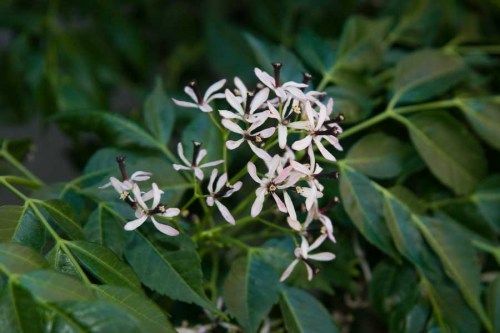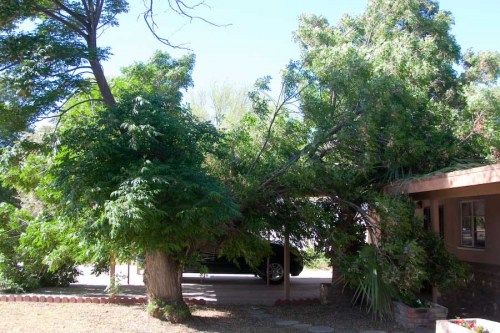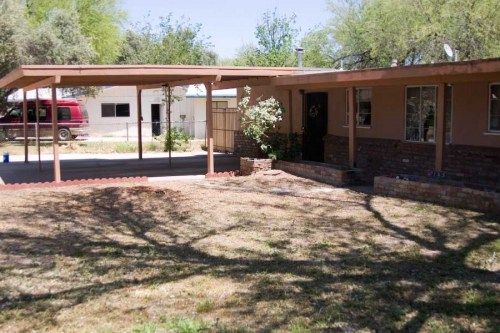A Chinaberry Removal
Melia Azedarach
We provide a wide range of professional services to meet your needs. We promise to provide every service with a smile, and to your highest level of satisfaction.
The call came late Saturday afternoon, “the wind just blew a Chinaberry tree over on our house, can you come over to look at it?” I quickly got ready and headed to the address. I wasn’t sure what I would find or how much work I would need to do before dark. The neighborhood has some very large old trees and this could be one of them. Sometimes its fine to leave something like this for a few days and sometimes it’s not. That is always a judgement call. What a shock when I drove up to the house!
Chinaberry Berries... Be Careful
If the berries are on a hard surface you better watch your step—it's like walking on ball bearings!
Chinaberry trees are native to southeast Asia and Northern Australia. They have naturalized into about the southern half of the United States where they thrive in disturbed areas along roads and forest edges. The ones growing in Wickenburg are typically old trees that had been topped before or are volunteer trees in different areas. The berries for which the tree are named are toxic to people and livestock but are eaten by birds (at least to the extent that they disperse the seeds. The berries seem persistent on the trees and will still be found as the tree is in flower, but the ground under them is always a mess and littered with shed berries.
Flowers & Berries

Soft Wood
The Chinaberry wood is soft and weak which is probably why many of the older trees were topped in the past under the assumption that it would make them safer. Instead, this set up a progression of decay and suckering that has rendered the trees more dangerous than they were before topping!
Here is what I saw when I walked up to the tipped tree.
Topping can be dangerous
The tree had been topped many, many times and the center of the tree was completely rotted out. The old “suckers” were up to 10″ diameter and perhaps 18ft tall – they had split the main trunk apart. A third of the tree ended up on the house, a third on the carport and a third was still standing. There appeared to be no discernible roof damage so we decided to leave it for Monday morning. Here is what it looked like when I got there:

Before

After
The decayed trunk
We carefully took weight off the branch tips from the roof and the ground. As we got into heavier wood we had to be careful to not damage the roof. The homeowner had a high deductible so their Homeowners Insurance didn’t come into play. It’s always best to talk to your agent before doing anything to a tree on your roof – they might cover at least part of the cost depending on your policy!
Interested in our services? We’re here to help!
We want to know your needs exactly so that we can provide the perfect solution. Let us know what you want and we’ll do our best to help.
